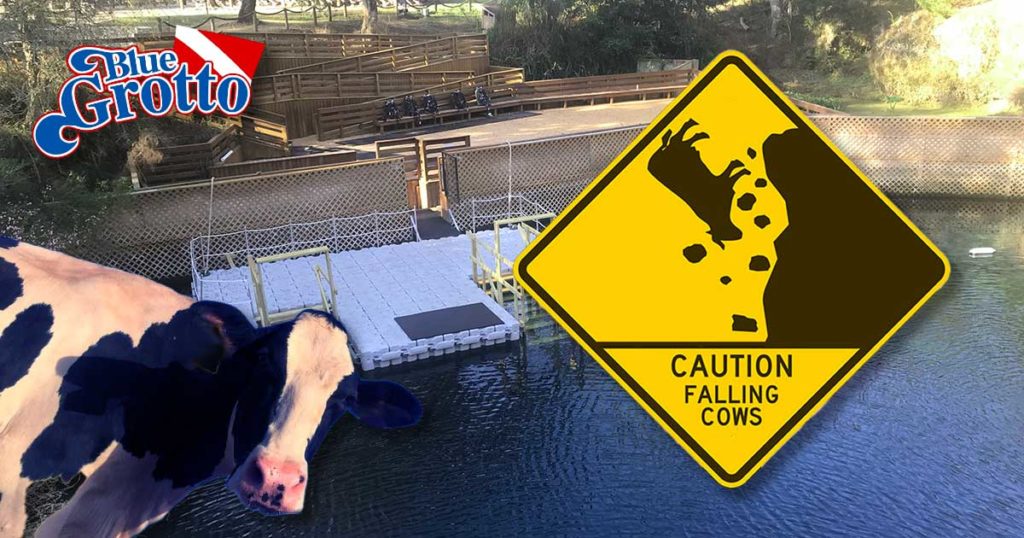The bottom of Blue Grotto is covered by a layer of silt. It always has been and most likely always will be. However, the amount of silt present today is nothing compared to what it was in the early 1960s when Tom McQuarrie bought the property.
At that time, the bottom of the Grotto was covered in multiple layers of silt, several feet thick. This silt was easily disturbed. Making matters worse, divers back then had no BCs and a poor understanding of buoyancy control.
Adding to this, people back then saw sinkholes as nothing more than convenient dumping grounds for all manner of garbage. After removing several pipes and other debris, Tom still had to deal with the issue of silt.
Tom was ultimately able to rig a suction dredge that removed most of the silt from the bottom and deposited it elsewhere on the property. As he got deeper into the silt, Tom discovered something unexpected: Several intact cow skeletons.
Bear in mind that before Tom acquired the property in 1963, the Grotto did double duty as a pecan grove and dairy farm. Let’s face it: When it comes to intelligence, cows are not the sharpest tools in the shed.
Over the years, several cows managed to lose their footing and fall into the Grotto. Many of these unfortunate heifers drowned. Their bodies would sink to the bottom to be eaten by fish and other creatures. Eventually, only the bones remained.
Before you go looking for grisly souvenirs, keep in mind the cow bones have either long since been removed or are buried so deep no one will ever find them. Still, the next time you look at the back wall of the Grotto, try to envision something as big as a cow taking a fatal plunge. At least being hit by a falling bovine is something divers no longer need worry about.
This is yet another in a series of articles on the history of Blue Grotto. As before, we are indebted to Tom’s son, Tom McQuarrie, Jr., who documented these stories in Crystal River and Blue Grotto: The McQuarrie Chronicles. You can buy this book on Amazon using the link below.


